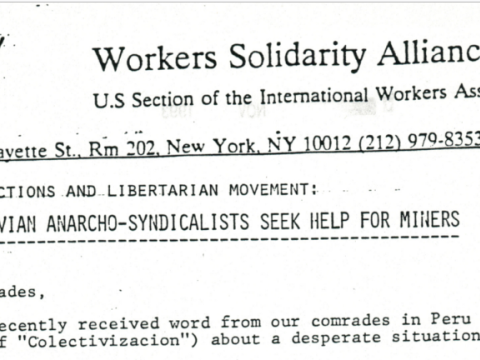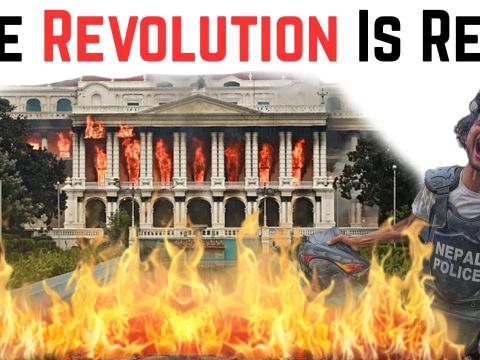On 10 April 1887 a few dozen bakery employees in Lima got together to launch the ‘Star of Peru’ (Estrella del Peru) Bakery Workers’ Society (SOPEP: Sociedad de Obreros Panaderos Estrella del Perú), affiliating to the Universal Union Artisans’ Confederation as federated branch No 9.
For the most part workers’ associations at the time were being set up under the aegis of mutualism or as ‘resistance societies’ in accordance with the International Working Men’s Association model. Thus, Buenos Aires saw the establishment that very same year of the Bakery Workers’ Cosmopolitan and Placement Society. Elsewhere, organising was going on among the printing employees, farm workers and tobacco workers in, say, Argentina, Cuba and Mexico.
Those early organisations were very tiny and for the most part they were short-lived. However, the Federation of the Bakery Workers of Peru survived despite hell and high water. There are few other unions left in the region that can boast of such a long lifespan.
By 1930 the Federation had a membership of 83; by 1919, this had risen to 552. This strong growth was down to mutualism having been supplanted by anarchist syndicalism, to radicalisation of its aims and to the often successful battles it waged for improvements in workers’ lives.
As in so many other historical instances, the meeting of minds between the Federation’s leaders and the Peruvian libertarian theorist Manuel González Prada proved crucial. The latter learned about the realities of workers ‘lives through these comrades and was able to refine his own ideas; the syndicalists learned from him about the history of labour struggles around the world and about anarchist thought.
In 1905 Manuel González Prada issued an appeal to all of Lima’s workers and craftsmen to mount the very first May Day celebration in the country:
“The 1st of May is designed to represent for humanity what 25 December represents for Christians; a day of joyful celebration, hope, regeneration … on this day revolutionaries hail the Future and the coming advent of an era when the liberation of all the oppressed and brotherhood between all races become realities .. everyone is called upon to marshal under the folds of the red flag” (La fiesta universal, 1905)
On 1 May 1905, the ‘Star of Peru’ Bakery Workers’ Federation (FOPEP) adopted this founding charter:
PROGRAMME
The Federación de Obreros Panaderos Estrella del Peru has as its purpose the encouragement of the spirit of solidarity between all comrades in the bakery trade and betterment of their moral and material circumstances by means of savings, resistance, enlightenment and mutual aid.
In addition to the needs and interests of the bakery worker, the Federation offers cosmopolitan solidarity to every grade and trade in both hemispheres, recognising the exploitation and monopolism of the capitalist as the source of workers’ discomforts.
The Federation shall at all times be on the side of justice and freedom, fighting doggedly on behalf of the rights so long usurped from the worker.
The Federation embraces as its own the following maxim of THE INTERNATIONAL: “The emancipation of the workers must be the workers’ own doing”. As a result, any social issue that is not the embodiment of the most advanced socialism is ruled out and it is declared that all of us workers around the world are brothers.
The undersigned solemnly declare their unconditional embrace of the ideals above and that they will never alter the aims and principles of the Federation, promising upon their word of honour that each of them will do all in his power, sacrificing everything, in order to nurture the Federation.
Lima, 1 May 1905
Signed on behalf of the Federation
The Committee: M. Caracciolo Lévano, Teodomiro Rodríguez, Juan Guerrero, Juvenal Vázquez, Roberto Ríos, Adalberto Sánchez, Moisés Sandobal, Leopoldo E. Umachea, Delfín A. Lévano, Germán Torres, Cecilio Gutiérrez, Carlos Wenglent, Miguel R. Moreno, Félix Arías, Belisario Bernaola, Francisco Miranda, Carlos Cabañas, José Hernández, Pastor Mendoza, Manuel Z García.”
International solidarity was an integral part of this programme, along with solidarity with other regional unions and, above all, solidarity with the Mexican revolution of 1910, together with collections and a range of support activities:
“Hail to the fallen who gave freely of their blood in the fight for egalitarian communism. Hosanna to the dauntless who, behind the shield of the red standard and the beautiful torch of truth, are redeeming and bringing the libertarian ideal to our oppressed multitudes. Mexican brothers, we salute you!” (Manuel Caracciolo Lévano in La Protesta (Lima) 10 May 1913)
One of the greatest battles of the following year, in keeping with the cause of the Chicago Martyrs of 1886, was for the eight hour working day. The very first to achieve this were the day labourers in Callao, Lima’s port district, following a general strike in 1913.
In December 1918, the workers in the spinning mills came out on strike for the 8 hours and on 2 January 1919, the bakery workers joined in. Within days, a coordinating committee was organising solidarity strikes in the press, the footwear industry, the transport sector and other sectors in Lima and Callao.
On 13 January, with the anarcho-syndicalists making the running, a two day general strike tried to impose the 8-hour day. At times the strikers were involved in tough clashes with the forces of order, until the government signed and order enshrining the eight hour day in law. Even though that order was not widely implemented, it represented a significant victory for labour.
1919 as a whole was a year of serious strikes, especially over reducing the cost of living. In April a committee was set up, made up of delegates from the main unions and factories; representing textile workers, dock workers, construction workers, workers from the bakeries and flourmills, printing workers and office workers. The response to these strikes and sit-ins was ferocious repression, resulting in the loss of several lives, followed by the introduction of martial law.
When that government fell in July that year, imprisoned labour militants were freed and the trade union organisations were strengthened. One of the aims of the workers’ movement had been achieved.
During the 1920s, the Federation’s membership grew to 757, accounting for nearly every worker in the industry. It carried on fighting for better pay and working conditions, for freedom of religion, association and action.
The First World War and the Russian Revolution made a huge impact on the workers’ movement worldwide. In Peru itself, the political and social situation changed. New forms of organisation emerged, with peasant movements and nationalist demands and political factions emerged that caused fresh worries for the anarchist trade unions.
Unions were forced to take a stand vis à vis these emerging trends and there were accompanying hesitancy and dissent. However, the values of autonomy and direct action prevailed inside the Federation up until the end of the 1930s. After that those ideals ran aground due to the repression orchestrated by a series of governments. Later, with another generation around, the Federation unfortunately switched to the line of the APRA party which had its sights set on taking power.
We hope now that the Federation can return to the libertarian path and thereby break free of the trap of flirtation and collaboration with political parties.
From the website of the Archivo FOPEP http://archivofopep.webcindario.com
Translated by: Paul Sharkey.
Posted at: http://www.katesharpleylibrary.net/v41qc1






Comments
Thanks for posting, great
Thanks for posting, great stuff!